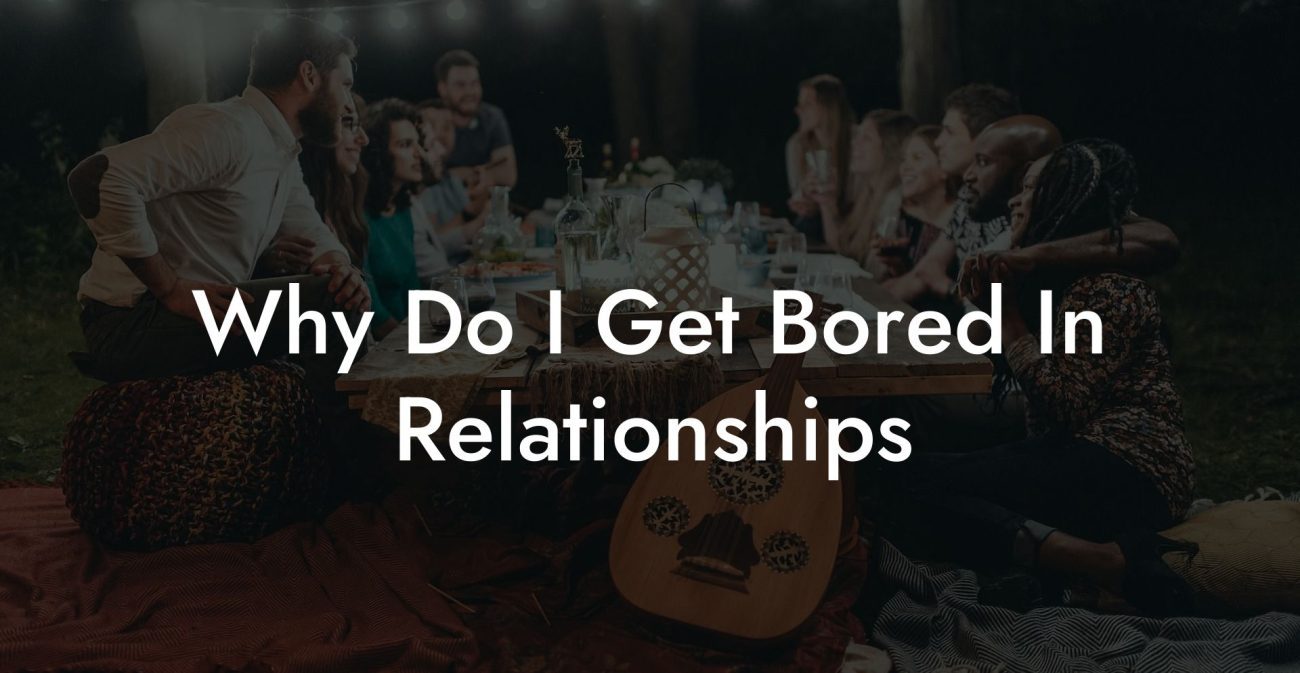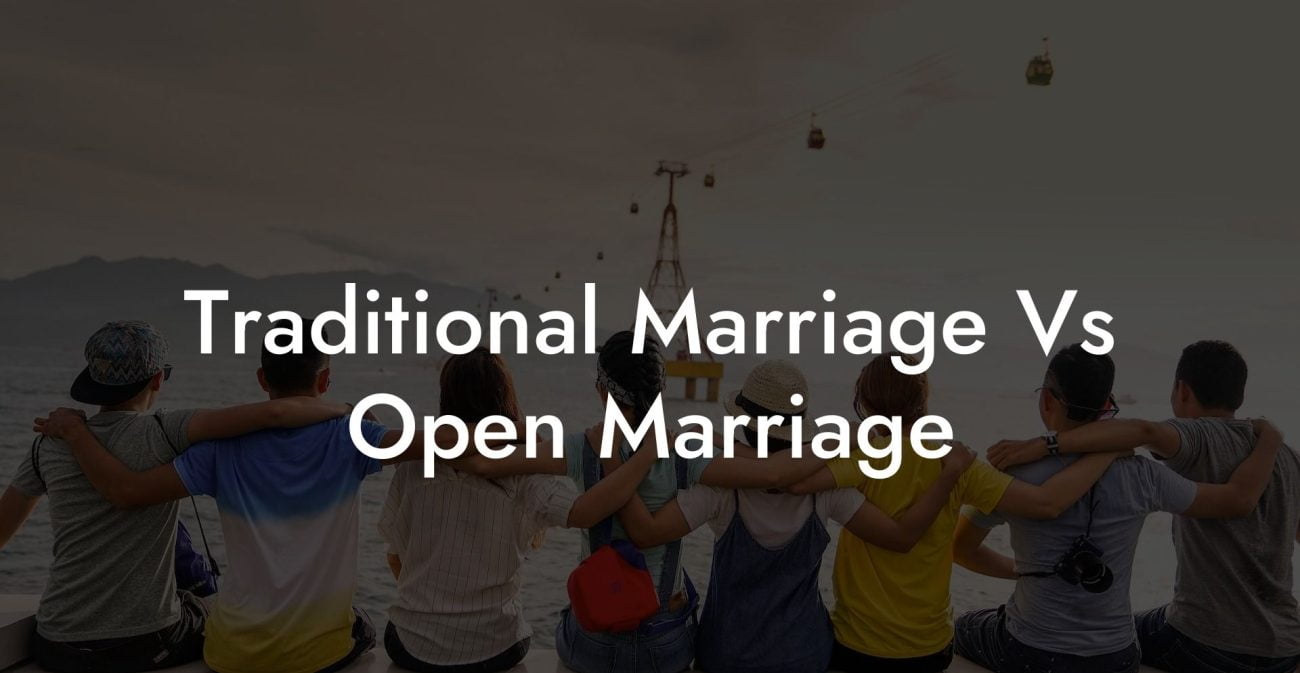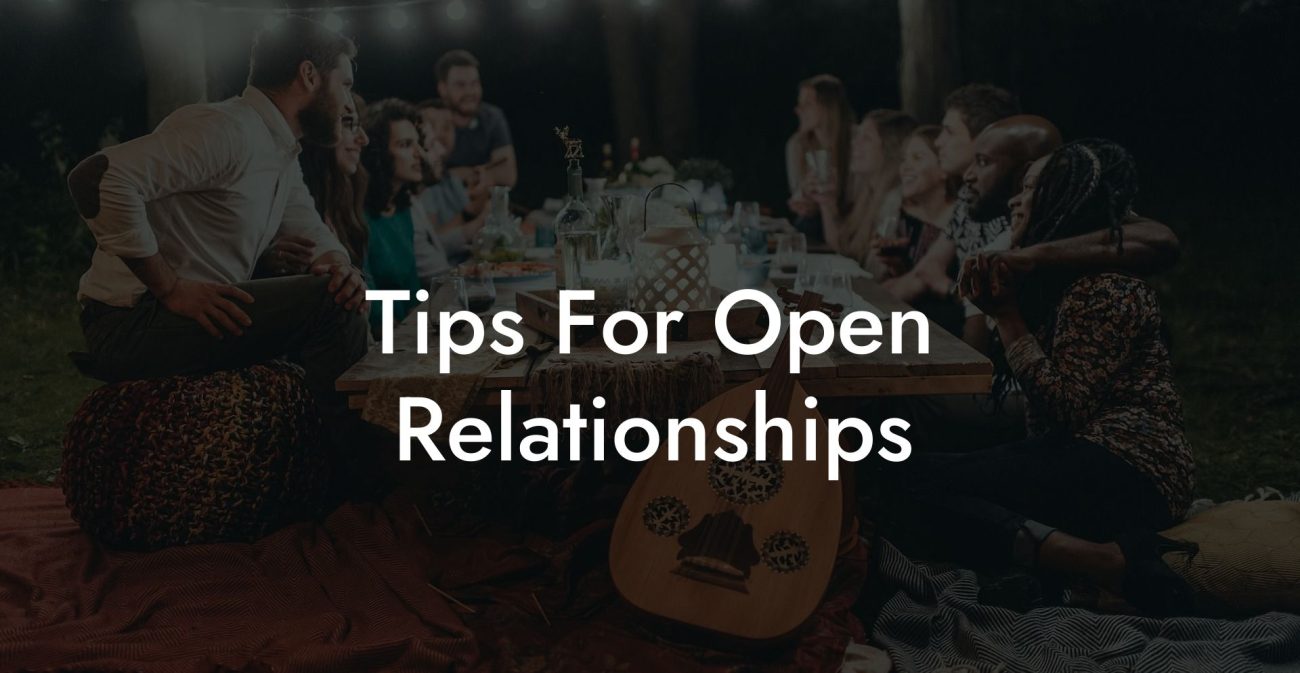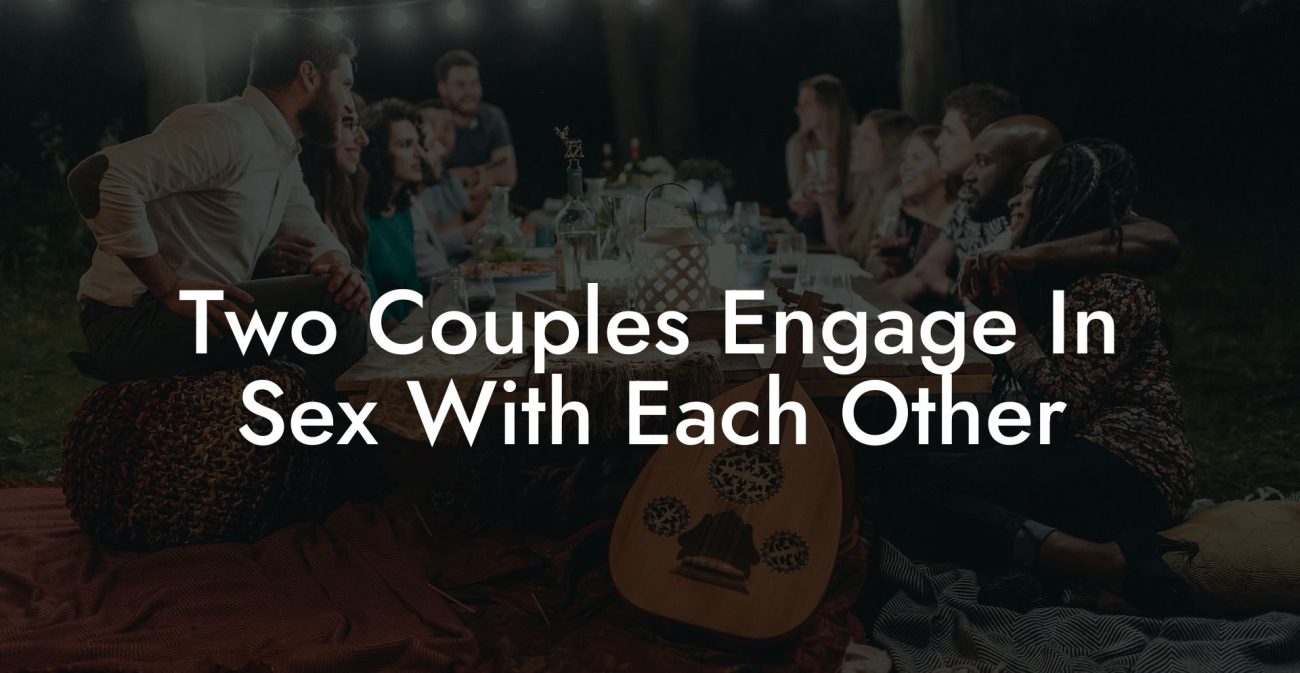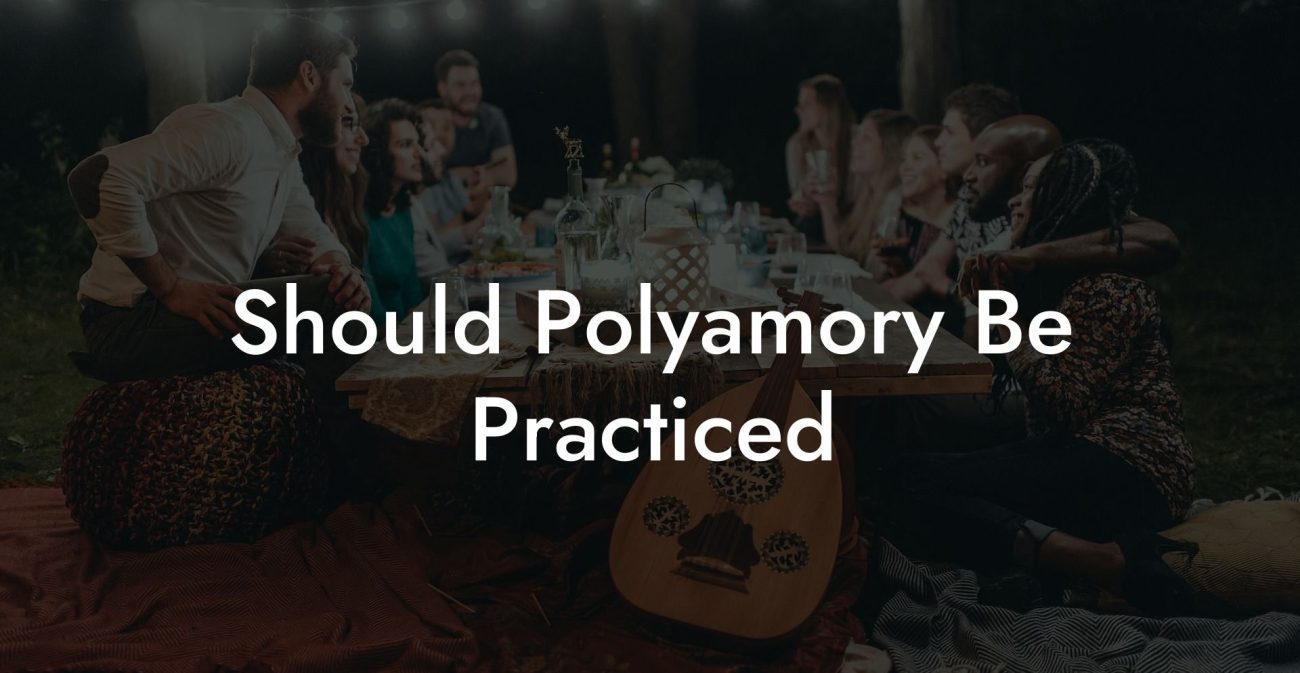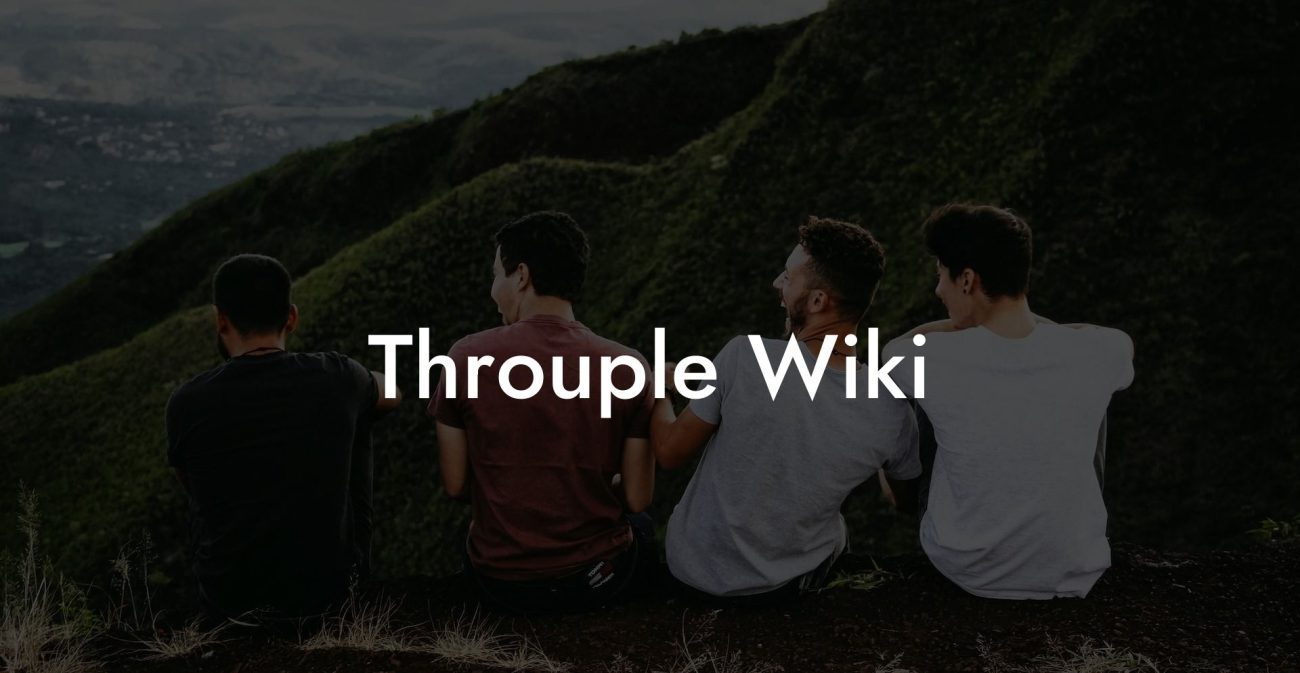Guide to Can A Person Go From Being Polyamorous To Monogamous

Guide to Can A Person Go From Being Polyamorous To Monogamous? Transitioning Your Relationship Style with Clarity and Confidence
Have you ever found yourself wondering if you could trade the vibrant, multi-faceted world of polyamory for the deep, singular connection of monogamy? You’re not alone. In today’s diverse relationship landscape, many people question whether their heart and lifestyle might shift from thriving on multiple connections to embracing a focused, exclusive bond. This comprehensive guide will help you explore whether you can transition from being polyamorous to monogamous, the factors to consider, and the practical steps for making such a change, with a healthy dose of honesty, self-reflection, and a dash of humor.
Quick Links to Useful Sections
- Guide to Can A Person Go From Being Polyamorous To Monogamous? Transitioning Your Relationship Style with Clarity and Confidence
- Understanding the Basics: Polyamory vs. monogamy
- What Is Polyamory?
- What Is Monogamy?
- Why Consider Transitioning? Motivations for Shifting Relationship Styles
- Personal Growth and Changing Priorities
- Emotional Exhaustion and the Need for Focus
- Relationship Dynamics and Future Goals
- Is Transitioning Possible? Exploring the Path from Polyamory to Monogamy
- The Possibility of Change
- Key Factors Influencing the Transition
- Self-Reflection: Assessing Your Personal Relationship Style
- Questions to Ask Yourself
- Communication and Negotiation: Talking to Your Partners
- Initiating the Conversation
- Negotiating Boundaries and Expectations
- Practical Steps for Transitioning
- Step 1: Reflect and Journal
- Step 2: Educate Yourself
- Step 3: Have Honest Conversations
- Step 4: Create a Transition Plan
- Step 5: Seek Professional Guidance
- Step 6: Embrace Change and Give It Time
- Challenges You Might Face and How to Overcome Them
- Managing Emotional Residue
- Addressing Residual Jealousy
- Dealing with Social Pressure and Judgment
- Real-Life Stories: Navigating the Transition
- Case Study: Jamie’s Journey to Monogamy
- Case Study: Alex and Taylor’s Mutual Shift
- Expert Insights: What Relationship Therapists Say
- Advice from the Field
- FAQ: Your “Can A Person Go From Being Polyamorous To Monogamous?” Questions Answered
- Resources and Community Support: Your Next Steps in Self-Discovery
- Top Books, Podcasts, and Blogs
- Therapy and Counseling
Whether you’re feeling burned out by juggling multiple partners, craving deeper emotional intimacy, or simply curious about a new chapter in your love life, read on to discover the essentials of this transformation. We’ll delve into the fundamental differences between polyamory and monogamy, explore personal motivations, and offer actionable advice for navigating the transition while maintaining respect, communication, and self-care.
Understanding the Basics: Polyamory vs. monogamy
What Is Polyamory?
Polyamory is a relationship model in which individuals engage in multiple romantic or sexual relationships simultaneously, with the full knowledge and consent of everyone involved. It’s about celebrating the notion that love isn’t a limited resource and that different partners can fulfill different aspects of your emotional and physical needs. In a polyamorous dynamic, each relationship is unique, and there is often a focus on open communication, flexibility, and mutual respect.
Polyamory is characterized by its emphasis on ethical non-monogamy, where boundaries are negotiated and trust is built through honest dialogue. Keywords such as ethical non-monogamy, multiple relationships, and open love encapsulate the polyamorous approach.
What Is Monogamy?
Monogamy, on the other hand, is the traditional relationship model centered on an exclusive, one-on-one connection. In a monogamous relationship, two people commit exclusively to each other, building deep emotional and physical intimacy over time. This model emphasizes stability, trust, and long-term commitment, often focusing on shared goals, mutual support, and the security that comes from investing entirely in one partner.
Monogamy is often associated with phrases like exclusive love, long-term commitment, and singular connection. For those who value simplicity and emotional security, monogamy provides a framework where both partners can fully devote themselves to building a life together.
Why Consider Transitioning? Motivations for Shifting Relationship Styles
Personal Growth and Changing Priorities
One common reason for transitioning from polyamory to monogamy is personal growth. As individuals evolve, so do their needs and desires. What once felt fulfilling in a polyamorous network might later seem overwhelming or unsustainable. You might start craving a deeper, more singular emotional connection, one that allows you to focus on building a life with a partner who becomes your primary source of support.
This transformation can be driven by the desire to simplify your life, to reduce the time and emotional energy spent on managing multiple relationships, or to seek a sense of stability that sometimes eludes polyamorous arrangements.
Emotional Exhaustion and the Need for Focus
Managing several relationships at once requires high levels of energy, time, and emotional bandwidth. If you’re feeling drained by the constant juggling act, scheduling dates, keeping track of feelings, and navigating complex dynamics, it might be time to re-evaluate your relationship style. Transitioning to monogamy can offer you a chance to concentrate on one partner, potentially leading to more profound emotional intimacy and a greater sense of balance.
Relationship Dynamics and Future Goals
Sometimes, the decision to move from polyamory to monogamy is influenced by where you see your future heading. Perhaps you’re considering major life changes, such as starting a family, buying a home, or building a shared career, that feel easier to navigate with a single, committed partner. In these cases, transitioning to monogamy isn’t a rejection of your past experiences but a natural evolution towards a relationship model that aligns with your long-term goals.
Is Transitioning Possible? Exploring the Path from Polyamory to Monogamy
The Possibility of Change
Yes, transitioning from being polyamorous to monogamous is definitely possible, but it’s important to understand that this journey is deeply personal and may not be linear. Many people find that their relationship needs change over time, and what once worked perfectly can evolve into something new. Transitioning is not about “losing” the experiences of polyamory; rather, it’s about shifting your focus to a different way of relating to others.
This transition requires self-reflection, honest conversations with your partners, and, in some cases, professional guidance. It’s essential to give yourself permission to change your mind, explore new possibilities, and redefine your boundaries without judgment.
Key Factors Influencing the Transition
Several factors can influence whether transitioning is the right choice for you:
- Emotional Readiness: Are you prepared for the deep, exclusive emotional investment that comes with monogamy?
- Relationship Goals: Do your long-term aspirations align more with a focused, singular partnership?
- Communication Skills: Can you have open, honest conversations about your changing needs with all your current partners?
- External Circumstances: Life events like career changes, moving, or starting a family can also influence your relationship preferences.
Self-Reflection: Assessing Your Personal Relationship Style
Questions to Ask Yourself
To determine whether transitioning from polyamory to monogamy is right for you, consider these reflective questions:
- What are my relationship priorities? Do I value deep emotional intimacy and long-term stability more than variety?
- How do I feel when managing multiple relationships? Am I energized by the diversity, or do I often feel overwhelmed?
- What do I envision for my future? Do I see myself building a life around one person, or do I thrive on having multiple sources of connection?
- How do I handle jealousy and emotional complexity? Am I comfortable managing these feelings in a polyamorous setting, or would a singular focus bring more peace?
- What feedback have I received from my partners? Have discussions with your current partners revealed any mutual interest in a more exclusive relationship?
Taking the time to answer these questions honestly can provide valuable insights into your evolving desires and help you chart a course that truly reflects your authentic self.
Communication and Negotiation: Talking to Your Partners
Initiating the Conversation
If you’re considering transitioning to monogamy, open communication with your current partners is essential. Start by setting aside a quiet time to talk about your evolving needs and the possibility of shifting your relationship dynamics. Some tips include:
- Be Honest: Clearly articulate your feelings, whether you’re experiencing burnout or a newfound desire for deeper intimacy.
- Listen Actively: Give your partners space to share their thoughts and feelings without judgment.
- Express Gratitude: Acknowledge the value of your past experiences while explaining why you’re drawn to a more exclusive connection now.
It’s important to understand that this conversation may be emotional, and that’s okay. Emotions are a natural part of self-discovery, and being open about them can pave the way for a smoother transition.
Negotiating Boundaries and Expectations
Once the conversation has started, work together to negotiate what the transition might look like. This might include:
- Gradual Phasing: Consider slowly reducing the number of external relationships rather than an abrupt shift.
- Setting Clear Boundaries: Define what exclusivity means for both of you, whether it involves ceasing all external romantic encounters or focusing on one primary connection.
- Regular Check-Ins: Schedule follow-up conversations to discuss how the transition is progressing and adjust your agreements as needed.
The goal is to ensure that everyone involved feels respected and secure throughout the process.
Practical Steps for Transitioning
Step 1: Reflect and Journal
Begin your journey with introspection. Use a journal to record your thoughts, feelings, and any changes in your desires. Reflect on past relationships and identify what aspects of polyamory no longer serve you.
Step 2: Educate Yourself
Dive into books, podcasts, and blogs that explore both polyamory and monogamy. Resources like "The Ethical Slut" and "More Than Two" can provide insights and help you understand the nuances of different relationship models.
Step 3: Have Honest Conversations
Sit down with your current partners for in-depth discussions about your feelings and intentions. Be open about why you’re considering a transition and listen to their perspectives as well.
Step 4: Create a Transition Plan
Work together to draft a plan that outlines the steps for transitioning. This plan might include timelines for phasing out additional relationships, new boundaries, and a schedule for regular check-ins.
Step 5: Seek Professional Guidance
If the transition feels overwhelming, consider speaking with a therapist or relationship coach who specializes in non-traditional relationships. Professional guidance can provide you with tools to manage emotions, communicate effectively, and navigate any challenges.
Step 6: Embrace Change and Give It Time
Understand that transitions rarely happen overnight. Be patient with yourself and your partners as you adjust to your new dynamic. Celebrate small victories along the way, and remain open to revisiting your agreements as needed.
Challenges You Might Face and How to Overcome Them
Managing Emotional Residue
Transitioning from polyamory to monogamy can stir up a mix of emotions, guilt, sadness, or even relief. It’s important to process these feelings through self-reflection and open conversations with your partner(s). Remember, it’s normal to grieve the loss of one relationship model even as you embrace a new one.
Addressing Residual Jealousy
Even if you’re moving toward monogamy, residual jealousy might linger, especially if previous polyamorous experiences involved complex dynamics. Work on these feelings by engaging in self-care, seeking therapy if necessary, and using regular check-ins to discuss any lingering insecurities.
Dealing with Social Pressure and Judgment
Society often has strong opinions about relationship models. Whether it’s skepticism about polyamory or assumptions about monogamy, external judgments can add pressure to your transition. Surround yourself with supportive communities and remember that your journey is yours alone, valid and worthy regardless of societal norms.
Real-Life Stories: Navigating the Transition
Case Study: Jamie’s Journey to Monogamy
Jamie spent years embracing a polyamorous lifestyle, enjoying the diversity and freedom it offered. However, as time went on, Jamie began to crave a deeper, more exclusive connection. After extensive self-reflection and heartfelt conversations with their partners, Jamie decided to transition into a monogamous relationship. Though the process was challenging, filled with moments of doubt and emotional upheaval, regular check-ins and professional guidance helped Jamie create a new, fulfilling dynamic centered on one primary partner.
Case Study: Alex and Taylor’s Mutual Shift
Alex and Taylor, who had been part of a busy polyamorous network, gradually found that their bond was the most stable and nourishing connection in their lives. After discussing their shared desire for exclusivity, they embarked on a transition plan together. They phased out other relationships and focused on building an even deeper, more committed partnership. Their journey was marked by honest dialogue, compromise, and a strong mutual commitment to growing together.
Expert Insights: What Relationship Therapists Say
Advice from the Field
Relationship therapists emphasize that transitioning from polyamory to monogamy is not a failure or a regression, it’s a personal evolution. Dr. Samantha Lee, a therapist specializing in non-traditional relationships, explains, “People’s needs change over time, and it’s important to honor that evolution. Transitioning to monogamy can lead to deeper intimacy and stability if both partners are committed to open communication and renegotiation of boundaries.”
Relationship coach Marcus Reed adds, “The key is to approach the transition with compassion and understanding, for yourself and for your partners. It’s a journey of self-discovery that can ultimately lead to a more authentic expression of your love.”
FAQ: Your “Can A Person Go From Being Polyamorous To Monogamous?” Questions Answered
1. Is it really possible to transition from polyamory to monogamy?
Yes, many people successfully transition from polyamory to monogamy. It requires honest self-reflection, open communication with all partners, and sometimes professional guidance.
2. What are the main reasons someone might want to make this transition?
Reasons vary but often include a desire for deeper emotional intimacy, a need to simplify life, or a shift in personal goals, such as planning for a shared future or starting a family.
3. How do I know if I’m ready for a monogamous relationship?
Reflect on your emotional needs, your experiences in polyamory, and whether you crave a singular, focused connection. Consider if managing multiple relationships feels overwhelming and if your heart leans toward deeper exclusivity.
4. How can I discuss this transition with my current partners?
Begin with honest, calm conversations. Express your feelings and desires using “I” statements, listen to their perspectives, and work together to negotiate a transition plan that respects everyone’s needs.
5. What challenges might I face during this transition?
Common challenges include managing residual jealousy, adjusting to a new dynamic, and coping with external judgments. Regular self-reflection, open dialogue, and professional support can help address these challenges.
6. Will transitioning to monogamy mean I lose my identity?
Not at all. Transitioning to monogamy is about aligning your relationships with your evolving needs, not about losing who you are. It’s a natural progression in your journey of self-discovery.
7. How important is professional guidance during this transition?
Professional guidance can be very helpful. A therapist or relationship coach experienced in non-traditional relationships can provide tools for managing emotions, improving communication, and ensuring a smooth transition.
8. Can a monogamous relationship meet all my emotional needs if I’ve been polyamorous?
Yes, many find that focusing on one primary partner can lead to deeper emotional intimacy and fulfillment. It’s important to communicate your needs and work together to build that connection.
9. How do I handle societal expectations during this transition?
Society often has strong opinions about relationship models. Stay true to yourself, seek out supportive communities, and remember that your journey is personal, what matters most is that your relationship style aligns with your authentic self.
10. Where can I find more resources on this topic?
Books like "The Ethical Slut" and "More Than Two", podcasts such as “Multiamory,” and online communities on Reddit and Facebook are excellent places to learn more and connect with others who have navigated similar transitions.
Resources and Community Support: Your Next Steps in Self-Discovery
Top Books, Podcasts, and Blogs
To further explore your relationship style and guide your transition, consider these resources:
- "The Ethical Slut" by Dossie Easton & Janet Hardy – A classic guide to non-traditional relationships that offers valuable insights.
- "More Than Two" by Franklin Veaux & Eve Rickert – Provides a deep dive into polyamory and the emotional dynamics behind multiple relationships.
- Podcasts: "Multiamory" and "The Polyamory Podcast" feature discussions and personal stories that can help you understand both monogamous and polyamorous perspectives.
- Online Communities: Engage with forums like r/polyamory or join Facebook groups dedicated to relationship self-discovery for shared experiences and advice.
Therapy and Counseling
Consider seeking the guidance of a relationship therapist or coach who specializes in both traditional and non-traditional relationships. Professional support can help you navigate your emotions, understand your evolving needs, and ensure that your transition aligns with your personal growth.
With the right mix of self-reflection, open communication, and supportive resources, you can confidently determine whether you lean more towards monogamy or polyamory, and build a relationship style that truly reflects who you are.
Lost & confused by all of the terms, types and seemingly made up 3 letter acronyms?? We've got you. Check out our Ethnical Non-Monogamy Dictionary >>
Useful Interruption: Not sure which relationship vibe fits you best? Take our Relationship Test, it’ll give you the real insight into your natural relationship style. Then, dive into our binge-worthy guides (from the tried-and-true to the “wait, that’s a thing?”) and find the perfect relationship type for your life:
- Monogamy
- Open Relationships
- Ethical Non-Monogamy
- Solo Polyamory
- Non-Hierarchical Polyamory
- Hierarchical Polyamory
- Relationship Anarchy
- Swinging
Now back to the main article but yeah take the test...






